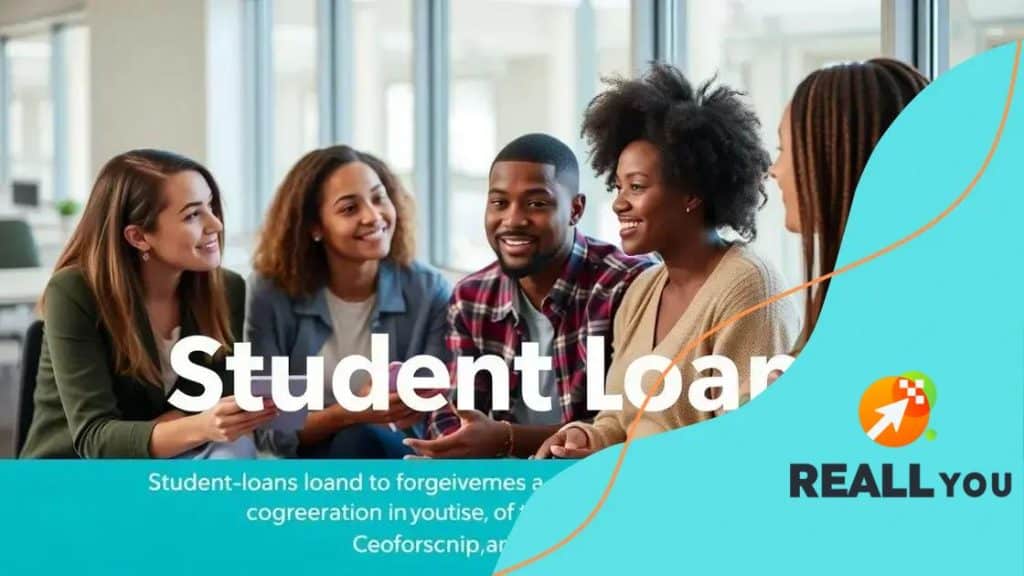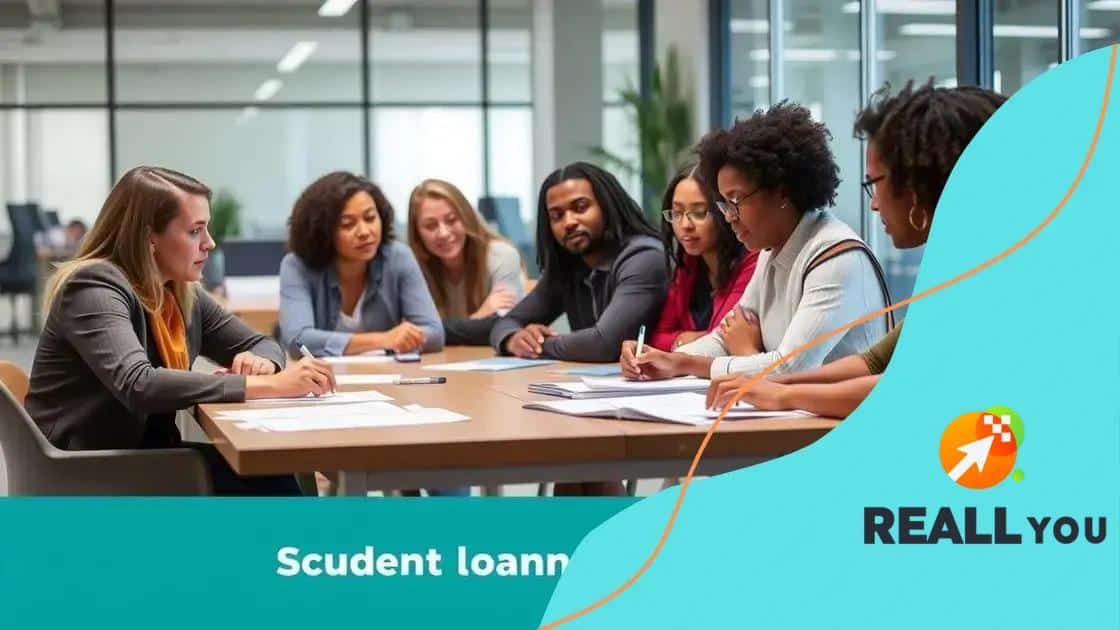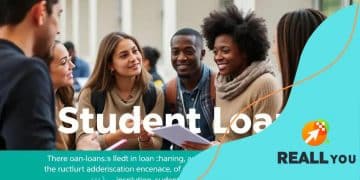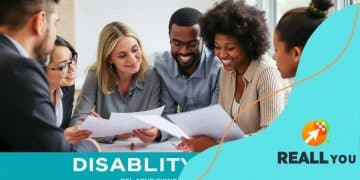How to navigate the new student loan forgiveness options

Anúncios
Understanding how to navigate the new student loan forgiveness options involves checking eligibility, gathering documentation, and avoiding common mistakes to successfully relieve your debt.
Are you looking for ways to manage your debt? How to navigate the new student loan forgiveness options can be your guiding light. Let’s dive into what you need to know to take advantage of these opportunities.
Anúncios
Understanding the new student loan forgiveness programs
Understanding the new student loan forgiveness programs is essential for borrowers who want to relieve their debt. With various options available, it can be confusing to navigate. However, knowing the key details can greatly help in applying for forgiveness.
Anúncios
What are the main types of forgiveness programs?
There are different types of forgiveness programs available, each with specific criteria. Here are a few popular ones:
- Public Service Loan Forgiveness (PSLF): For those who work in government or nonprofit jobs.
- Teacher Loan Forgiveness: Made for teachers who work in low-income schools.
- Income-Driven Repayment (IDR) Forgiveness: For borrowers who make payments based on their income for 20 to 25 years.
These programs help ease the burden of student debt. Knowing which program you might qualify for is crucial.
How to determine eligibility
Eligibility varies by program, so it’s wise to take time to research. Factors include your employment, the type of loans you have, and how long you’ve been making payments. Make sure to review the requirements for each program carefully.
If you’re uncertain, visiting the official student aid website can provide clarity. Additionally, contacting your loan servicer can help with specific questions about your loans.
Gathering necessary documentation
Submitting your forgiveness application requires proper documentation. Typically, you will need:
- Your employment certification form for PSLF.
- Proof of income for IDR programs.
- Your student loan information and repayment history.
Ensuring you have all required documents will speed up the application process.
Don’t hesitate to ask for help if you’re unsure about any aspect. Many resources, including financial aid offices, can offer assistance.
Understanding the new student loan forgiveness programs can open doors for those struggling with their loans. With the right information and support, borrowers can successfully navigate their options.
Eligibility criteria for forgiveness options
Eligibility criteria for forgiveness options can vary widely, making it crucial for borrowers to understand the specific requirements for each program. Knowing these criteria can lead to significant savings and relief from student debt.
Key factors for eligibility
Most forgiveness programs have several common criteria. Here are some key factors to consider:
- Type of Employment: Many programs require you to work in certain fields, such as public service or education.
- Loan Type: Ensure that your loans qualify for forgiveness. Federal loans often have different rules than private loans.
- Payment History: Keeping track of your payment history is important. Some programs require a specific number of on-time payments.
Besides these factors, you should also examine your income level and financial situation. Some programs offer income-driven repayment plans that can lead to forgiveness after a set number of years.
Understanding specific programs
Each forgiveness option comes with its own eligibility requirements. For example, the Public Service Loan Forgiveness (PSLF) program is specifically designed for individuals working in qualifying government or nonprofit jobs. However, it requires a minimum of 120 qualifying monthly payments.
On the other hand, Teacher Loan Forgiveness targets teachers who work in low-income schools and provides relief after five years of service. Understanding the differences among programs will help you identify which one fits your situation best.
Documentation and application
To get started with any forgiveness program, you’ll need to submit proper documentation. Typically, this includes:
- Your employment certification forms.
- Proof of income documentation for income-driven plans.
- Your loan details and payment history.
Collecting these documents in advance can simplify the application process and speed up approval times. It’s also a good idea to stay informed about any changes to eligibility criteria.
Application process for student loan forgiveness

The application process for student loan forgiveness can seem daunting, but with a clear understanding, it becomes manageable. Knowing the steps involved is essential for maximizing your chances of success.
Steps to apply for forgiveness
To begin the process, you will need to follow several important steps. Here’s what you need to do:
- Determine your eligibility: First, verify if you qualify for any forgiveness program. This involves understanding the requirements associated with different options.
- Gather required documentation: Collect all necessary documents, such as proof of income and employment certification forms.
- Complete the application form: Fill out the appropriate application for the forgiveness program you are pursuing. Ensure all information is accurate.
Staying organized throughout this process can save you time and reduce stress.
Submitting your application
Once you have completed the necessary forms, it’s time to submit your application. This can often be done online, but some programs may require a paper application. Make sure to check the submission guidelines carefully.
After submitting, keep copies of everything you send, as this can be helpful later if there are any questions or issues.
Follow up and await a decision
After submission, it’s important to follow up with your loan servicer or the institution managing the forgiveness program. They may provide updates on your application status or request additional information. Be patient, as processing can take time, but staying engaged will ensure you are not missing important steps.
Remember, while the application process for student loan forgiveness can take some time, staying informed and organized can make the experience much smoother.
Common mistakes to avoid
When applying for student loan forgiveness, many borrowers make mistakes that can delay or even prevent their applications from being approved. Understanding these common pitfalls can help you navigate the process more smoothly.
Not checking eligibility
One of the biggest mistakes is failing to check eligibility for the specific forgiveness program. Each program has unique requirements, and not meeting them can lead to automatic rejection. Take the time to review the criteria carefully before applying.
Incomplete documentation
Many applications are denied due to incomplete documentation. Ensure that you provide all required papers, such as income verification and employment certifications. Missing even one document can result in delays or denials.
- Proof of employment: Always submit your employment certification form.
- Income records: Include the most recent tax returns or pay stubs.
- Loan details: Ensure you have the correct loan information and account numbers.
By carefully reviewing and double-checking your documents, you can minimize issues.
Ignoring deadlines
Another mistake is ignoring important deadlines. Each forgiveness program has specific timelines for applications and renewals. Be sure to mark these deadlines on your calendar and set reminders to complete any necessary actions.
Lastly, some borrowers forget to follow up on their applications. After submission, keep in contact with your loan servicer to confirm the status of your application. This helps address any issues sooner rather than later. Avoid these common mistakes, and you’ll have a better chance of achieving your student loan forgiveness goals.
Success stories of borrowers
Success stories of borrowers who have navigated the student loan forgiveness process can be inspiring and informative. These individuals often face challenges but find ways to overcome them and achieve their goals.
Real-life examples
Many borrowers have successfully eliminated their student debt through various forgiveness programs. For instance, Sarah, a public school teacher, applied for the Public Service Loan Forgiveness (PSLF) program after ten years of teaching. By maintaining her employment in a qualifying position and making on-time payments, she had her remaining balance forgiven.
Similarly, James, who worked as a social worker, achieved forgiveness through the same PSLF program. His story highlights how dedication to public service can lead to significant financial relief.
Learning from their experiences
These success stories teach us several important lessons. First, it’s essential to fully understand the requirements of the forgiveness programs. Second, staying organized with documentation is vital. Keeping track of payments and employment history can make a big difference.
- Meet the eligibility criteria: Knowing the specific requirements of each program is crucial.
- Documentation: Make sure to collect and keep your application and payments organized.
- Stay engaged: Regularly check on your application status and communicate with your loan servicer.
Hearing how others have achieved student loan forgiveness can motivate borrowers to take action. Their stories remind us that while the process can be long and complex, success is possible with persistence and knowledge.
FAQ – Common Questions About Student Loan Forgiveness
What is student loan forgiveness?
Student loan forgiveness is a program that relieves borrowers from having to repay part or all of their federal student loans.
Who qualifies for student loan forgiveness?
Eligibility varies by program, but generally, you must meet specific criteria related to your job, loan type, and payment history.
How can I apply for student loan forgiveness?
To apply, gather essential documentation, complete the application forms required for your forgiveness program, and submit them to your loan servicer.
What are some common mistakes to avoid when applying?
Common mistakes include not checking eligibility, submitting incomplete documents, missing deadlines, and failing to follow up on application status.






